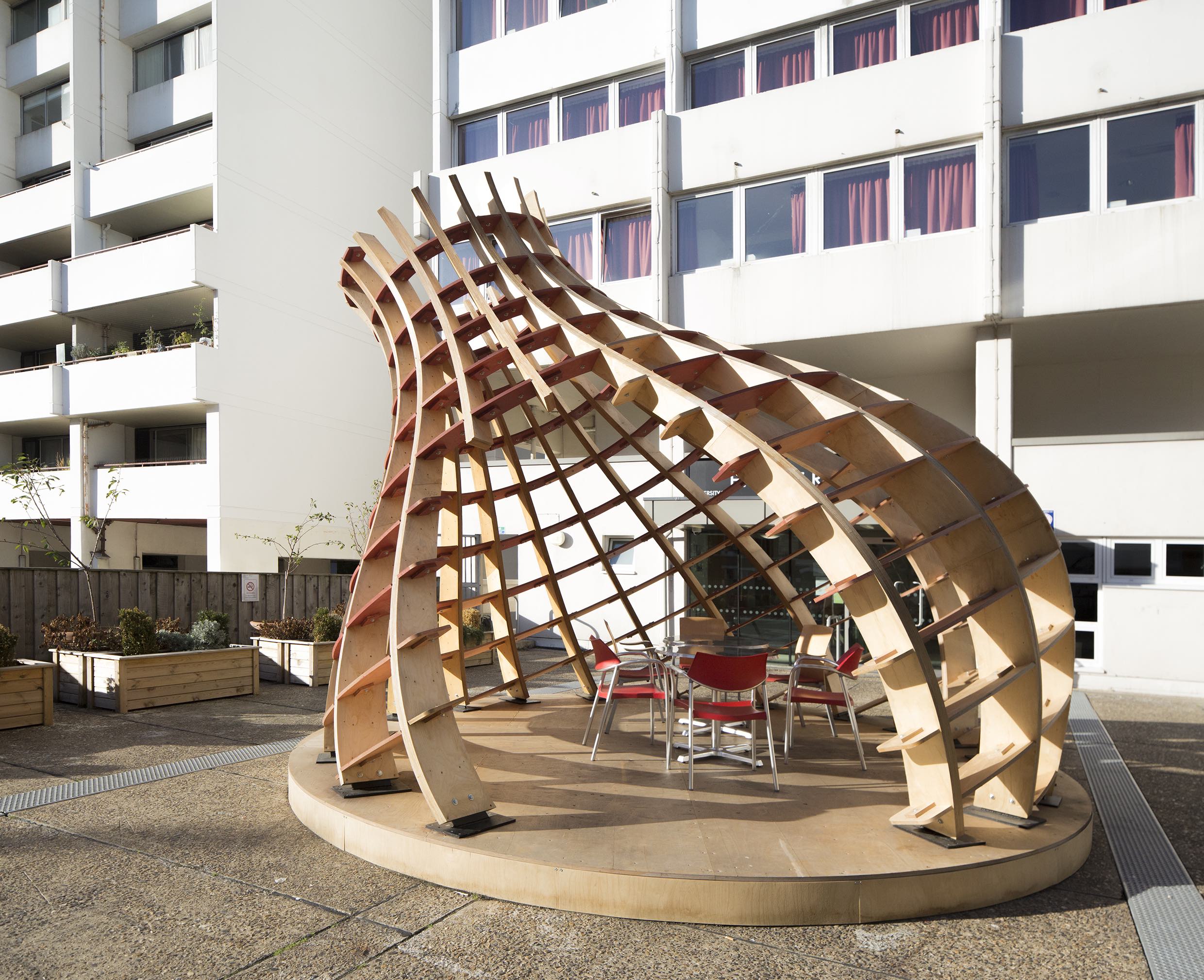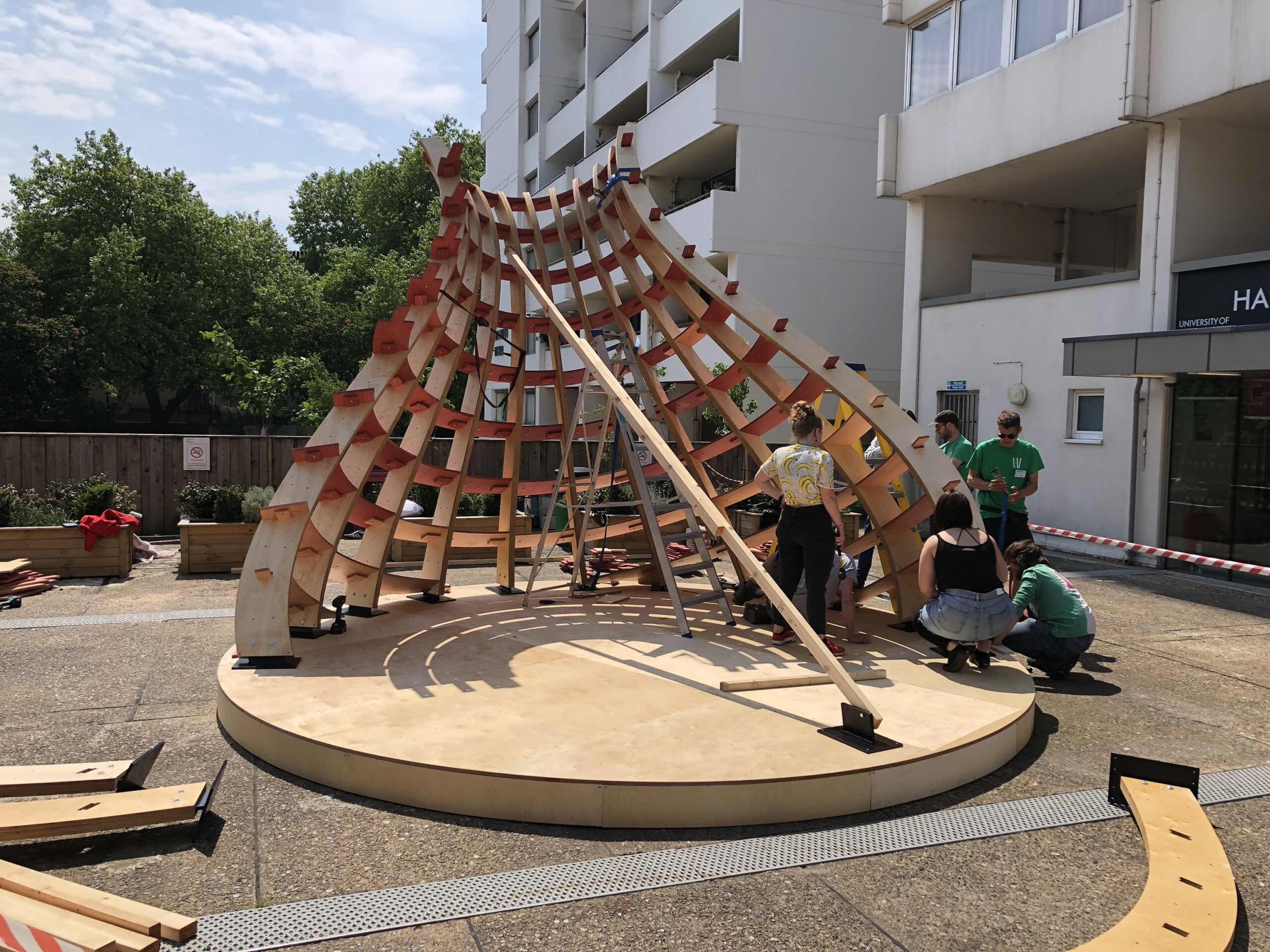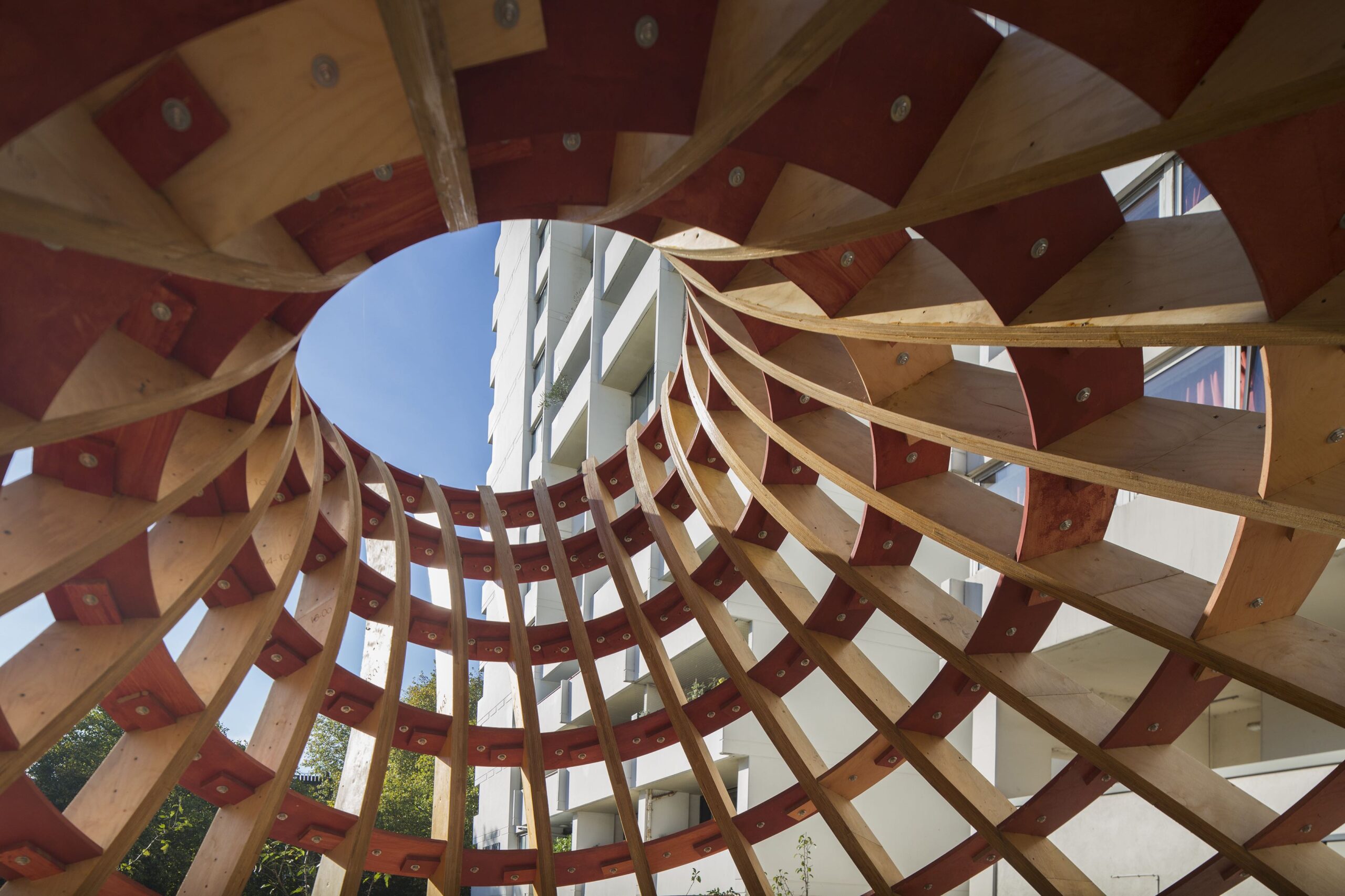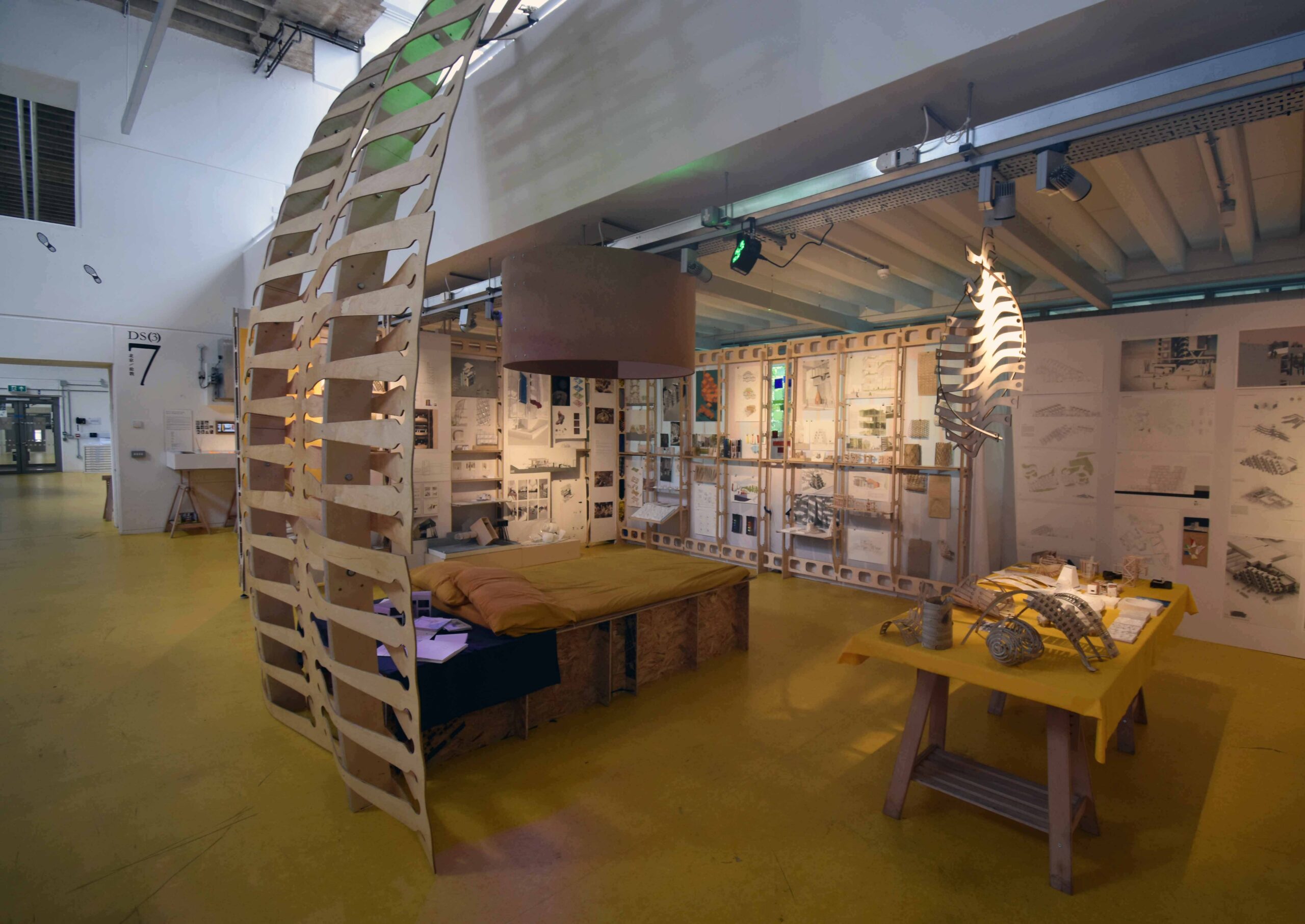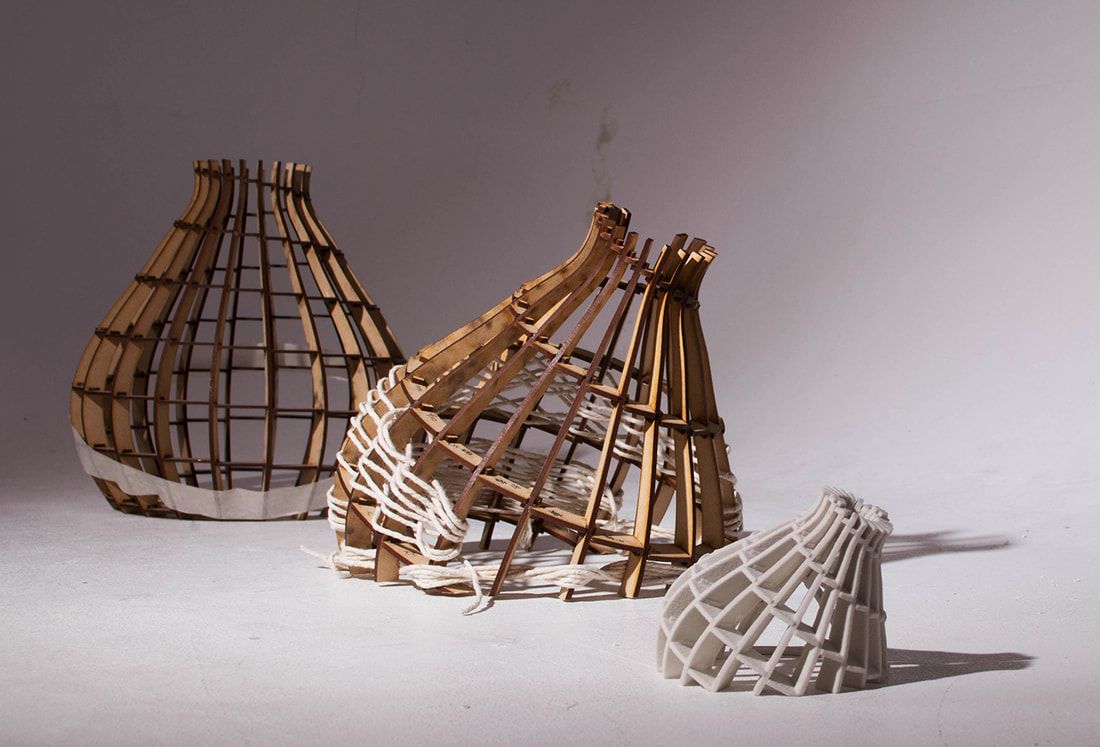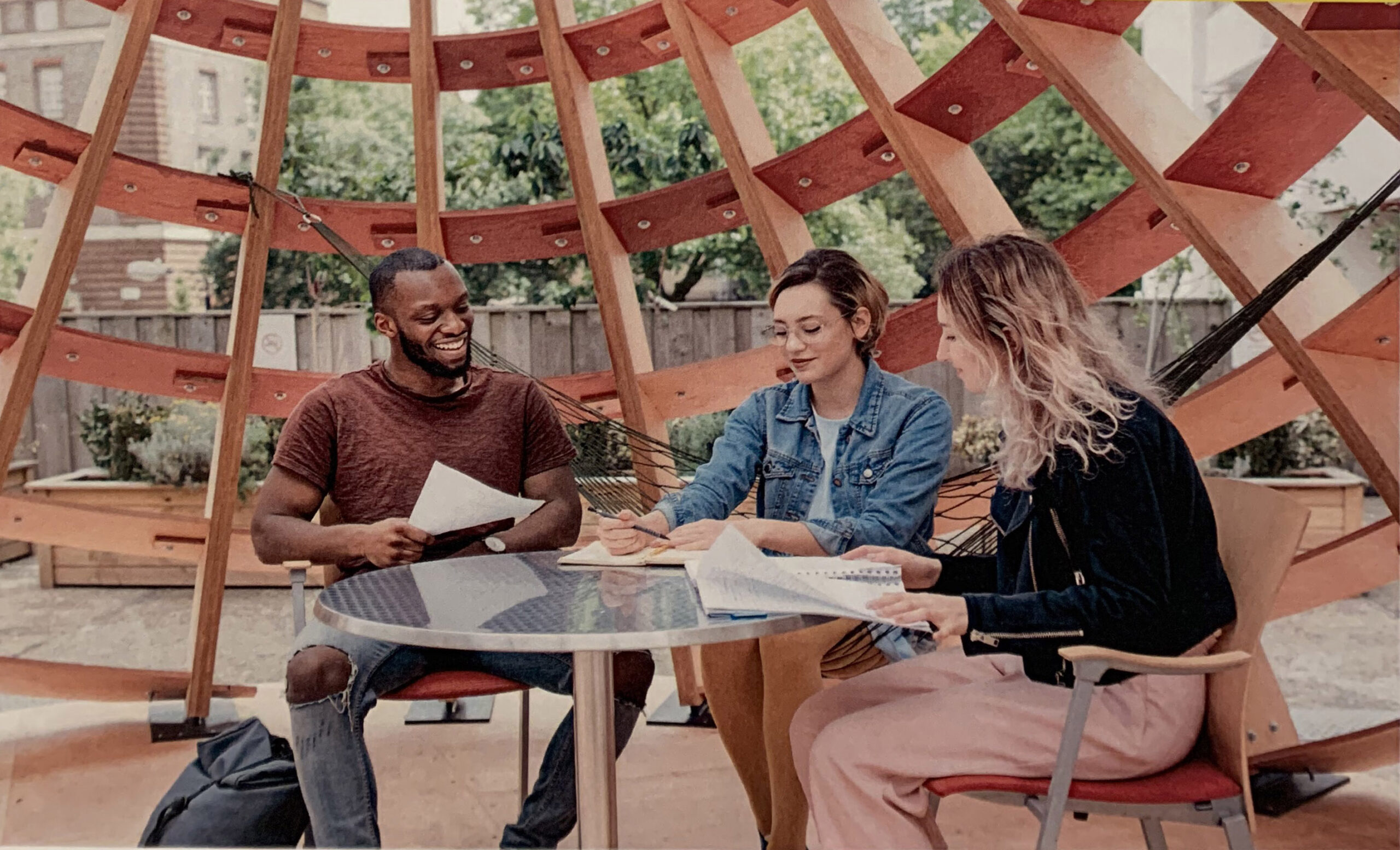Oculus Pavilion Beyond Studio
The Oculus Pavilion was QHT funded and designed and built by third year students from the School of Architecture+Cities at the University of Westminster.
Innovative design and production methods were used with all the structural elements CNC cut and the design and construction was algorithmically supported with Grasshopper software.
The circular structure with a view into the sky was inspired by Architect Vladimir Tatlin’s 1919 design for the Tatlin Tower, a design not realised until a sculpture was built in 1971 as part of the ‘Art in Revolution’ Exhibition at the Hayward Gallery. The 1971 sculpture was reconstructed at the rear patio of the University of Westminster’s Marylebone Campus, the same location where the students’ Oculus pavilion was initially exhibited. Tatlin’s Tower was an ‘avant-garde structural design’ which had a considerable impact on contemporary artistic thinking.
The project was initiated and lead by senior lecturer Maria Kramer and it was part of the London Festival of Architecture: “This is an exciting opportunity for students to experience the detail design and building process first hand, understanding the complex development of translating a cutting-edge proposal into a build structure. We used innovative CNC technology manufacturing more than 300 component pieces at the university’s own Fabrication Laboratory. With the help of the structural engineers StructureMode and Weber Industries we managed the construction process promoting knowledge exchange and applied research. ”
The Oculus Pavilion is now permanently installed at the Harrow Campus of the University of Westminster.
Tutors: Maria Kramer and Eric Guibert
Students:
- Gaia Buscemi
- Simon McLanaghan
- Youjong Won
- Nikola Babic
- Gentrit Bunjaku
- Ahmed Elmasri
- Aloys Heitz
- Dominyka Kybartaite
- Andreas Makris
- Aesha Mehta
- Alexander Onufriev
- Christina Petridou
- Matthew Rea
- Vittoria Rega
- Lina Noueri
- Patricia Bob










